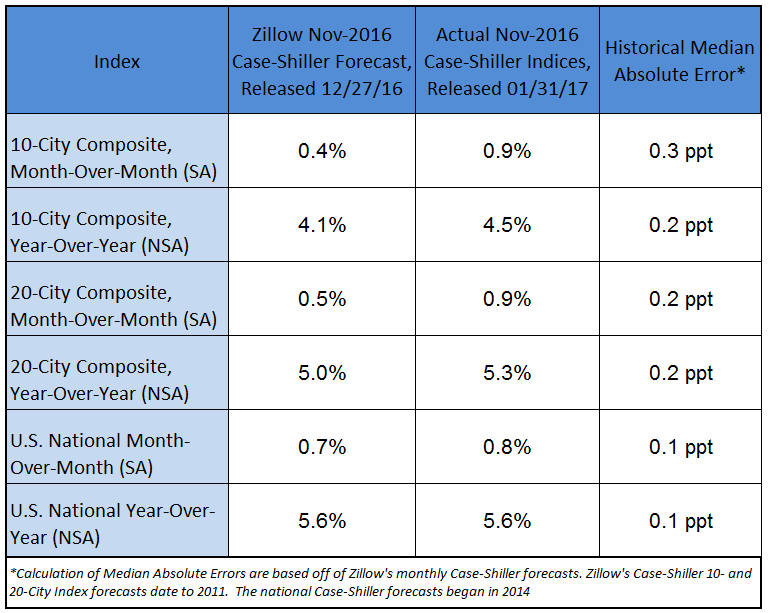Uncategorized
November Case-Shiller: Defying Expectations, Home Price Growth Continues to Speed Up
National home price growth accelerated in November, exceeding expectations, as robust home buyer demand and inadequate supply of homes for sale continued to drive the market up, according to the November S&P Corelogic Case-Shiller indices.
National home price growth accelerated in November, exceeding expectations, as robust home buyer demand and inadequate supply of homes for sale continued to drive the market up, according to the November S&P Corelogic Case-Shiller indices.
November Case-Shiller data showed the U.S. national index rose 5.6 percent from November 2015, up from 5.5 percent growth recorded in October. Both smaller 10- and 20-city indices also grew faster annually in November, up 4.5 percent and 5.3 percent, respectively, compared to 4.3 percent and 5.1 percent year-over-year growth in October.
On a seasonally adjusted monthly basis, November Case-Shiller data also revealed an acceleration in home price growth between October and November. Both 10- and 20-city indices grew 0.9 percent between October and November, up from 0.6 percent and 0.7 percent, respectively, between September and October. The U.S. national index rose 0.8 percent in November from October (SA), the same monthly pace recorded in October.
Below are Zillow’s forecasts of November Case-Shiller data, along with the actual November Case-Shiller numbers released today.

National home prices continue to grow at a rapid clip, largely driven upward by the now-familiar forces of high demand from home buyers and limited supply of homes available for sale. But even as the pace of home value growth keeps rising, growth in rents is flattening out and stabilizing, which – combined with a series of other factors – will likely begin impacting the for-sale market sooner or later. Slower rental growth may take some of the heat off those renters thinking of buying just to escape the volatility of steep annual rent hikes, potentially leading to a softening in demand. Rising mortgage interest rates will also impact home affordability, if only modestly at first, which could also erode some of the affordability advantages of buying over renting and further cooling demand. Housing supply itself is likely to be impacted by softening rents, as the pendulum shifts from large multifamily development toward more single-family and for-sale projects, boosting supply. The main forces driving the for-sale market won’t change overnight, but these emerging trends could start impacting the market in time for the busy spring and summer home shopping season, and bear watching in coming months.

